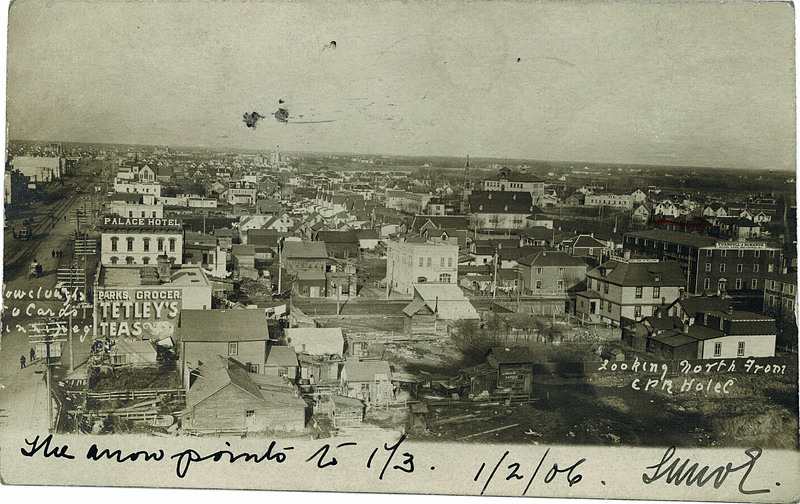North Side: Conditions in 'New Jerusalem'
The rapid development and overcrowded nature of much of Winnipeg’s northern slums led to desolate conditions in general, and in regards to roads. The construction of homes in Northern slums led to long term difficulties in improving the lot of this marginalized community. The average lot in Northern Winnipeg was only eight to ten metres wide. Lots were designed to maximize efficiency over aesthetics, thus roads were narrower than found in more affluent neighborhoods.[1] One can imagine that the descriptor of the North side as cramped comes in part from the squashed nature of its houses along with the encroachment of homes onto the street in comparison to the South. When expanding streets or installing services, having to contend with a system designed for efficiency but in practice created squalor posed a difficulty in making any improvements in living standards. Additionally, with much of the North having dirt roads into the 1900s, to say nothing of modern sewage or water services, the streets were likely quite messy. The conscious difference between the streets of the North with the South was readily apparent to Winnipeggers, as one citizen remarked upon the disgraceful state of the roads of the northern, “neighborhoods and alleys,” in comparison to downtown Winnipeg. While in theory after paving streets were to be maintained solely by the city, the letter writer notes that several of the street improvements which had come to the North appeared dilapidated or corroding.[2] Given the aforementioned sense of isolation between the two halves of the city, the dirt roads of the North side reveal a sense of neglect from the city’s core. If a road or sidewalk were to have been improved by stone or plank, it would likely be returning to the dirt and thus mud which defined the city’s roads forty years previously. The streets themselves would be imposing, as houses would appear to lean onto the street. While eventual improvements including streetcar service and road paving would come following the city’s overall development, the North continues to remain materially disadvantaged.
